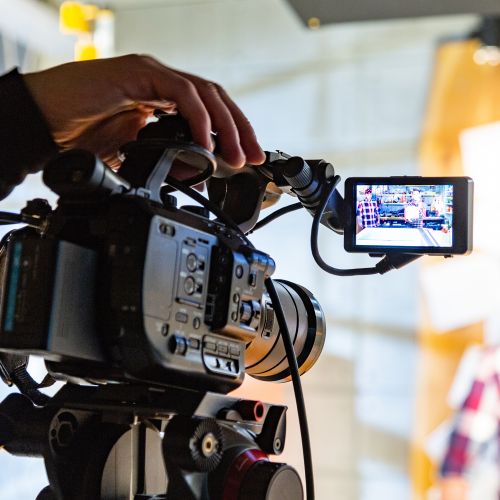Reliable Legal Videography for Courtroom Documentation.
Reliable Legal Videography for Courtroom Documentation.
Blog Article
Why Legal Videography Is Necessary for Accurate Legal Record-Keeping
In the realm of legal procedures, the accuracy of record-keeping is paramount, and legal videography emerges as an important device in this context. By catching the nuances of spoken and non-verbal interaction, it considerably lowers the potential for misinterpretation that can go along with typical written records. The preservation of genuine visual evidence not only boosts the reliability of statements yet likewise adds to a comprehensive account of events. As we explore the complex advantages of lawful videography, one have to consider its implications for the future of judicial stability and openness.
Significance of Visual Evidence
Establishing the significance of visual evidence in legal procedures is vital for ensuring accurate record-keeping and enhancing the general stability of the judicial process. Visual proof offers as a vital tool in documenting events, conditions, and other essential information that might be necessary to an instance. Unlike created accounts, which are at risk to analysis and predisposition, visual recordings offer a goal, unalterable depiction of truths as they occurred.
This form of proof can catch a range of aspects, including witness behavior, ecological context, and physical proof, all of which may influence judicial outcomes. By presenting a clear and thorough aesthetic story, legal videography removes obscurity and aids to protect the authenticity of the evidence.
Furthermore, visual proof can be critical in decreasing disputes over valid inconsistencies, as it permits a direct contrast against testimony and other recorded documents. In an era where electronic innovation is significantly prevalent, the capacity to existing visual evidence properly can dramatically improve the overall high quality of legal process. Inevitably, the consolidation of aesthetic proof not just reinforces the documentation procedure however additionally strengthens public count on the judicial system by promoting openness and responsibility.
Enhancing Testimony Integrity
The assimilation of lawful videography into court room procedures dramatically enhances the credibility of witness statement. By recording the nuances of spoken and non-verbal communication, video recordings give a more extensive depiction of a witness's attitude, feelings, and reliability. This visual documents allows jurors to observe the witness's body language, face expressions, and overall carriage, which are critical components that can influence their assumption of testimony trustworthiness.

Furthermore, the presence of video clip footage can discourage witnesses from offering misleading or overstated declarations, as they are conscious that their testimony is being recorded. This liability strengthens the integrity of the judicial procedure. Eventually, lawful videography functions as an important device in making certain that witness testament is not only properly illustrated but additionally watched with increased trustworthiness by all parties entailed.
Comprehensive Record Conservation
Comprehensive record preservation is necessary for maintaining the honesty of lawful proceedings. Lawful videography functions as a vital tool in this procedure, providing an accurate aesthetic and acoustic account of statements, depositions, and various other turning points in a case. Unlike typical written transcripts, video clip recordings record the subtleties of body movement, tone, and emotion, which are essential for recognizing the context and intent behind declarations made during lawful proceedings.
Including audiovisual aspects into record-keeping boosts the preservation of evidence, guaranteeing that it stays intact and accessible throughout the lawful process. This is especially vital in situations where the dependability of witness declarations might be challenged, as visual recordings can validate claims and offer clearness. In addition, video clip documents can be important throughout appeals or retrials, providing an unaltered representation of the initial testimony.

Moreover, the capability to examine video clip proof enables lawyers to identify crucial details that may have been neglected in created records. By maintaining a comprehensive archive of legal process via videography, regulation firms can copyright the highest standards of precision and liability, inevitably contributing to a fairer judicial process.
Streamlining Lawful Procedures
Enhancing legal procedures is essential for enhancing efficiency and reducing hold-ups within the judicial system. Legal videography acts as a pivotal device in look what i found accomplishing this goal by providing clear and exact aesthetic paperwork of court hearings, depositions, and statements - legal videography. This technology permits for real-time recording, making certain that all spoken and non-verbal signs are caught, which can assist in quicker resolution of disputes
The assimilation of videography into lawful procedures lessens reliance on conventional techniques, such as prolonged records, which can be time-consuming to produce and examine. By having accessibility to videotaped video footage, attorneys can promptly reference essential minutes, improving their ability to prepare and existing instances effectively. This immediacy also assists in the making clear of testaments, reducing the possibility for misconception.

Admissibility in Court
Accurate documents is important not just for efficiency yet likewise for ensuring that evidence is permissible in court. Legal videography offers as a crucial device in this process, giving a reputable aesthetic record of testaments, statements, and events.
To be considered permissible, legal videography needs to stick to recognized protocols, such as appropriate tools usage, suitable lights, and clear sound capture. Furthermore, it is necessary to have certified videographers that understand the legal needs bordering evidence collection. legal videography. The chain of guardianship need to additionally be maintained to stop any cases of tampering or modification
Moreover, lawful videography can boost the persuasiveness of proof by providing jurors with a straight sight of the testament, enabling a more engaged understanding of the case. In summary, the assimilation of lawful videography right into record-keeping not only supports efficiency Go Here yet also boosts the honesty and admissibility of evidence in court proceedings.
Conclusion
In verdict, lawful videography plays a pivotal role in guaranteeing precise legal record-keeping by offering unbiased aesthetic paperwork. This technique improves the trustworthiness of testaments, maintains comprehensive records, and improves legal process. Additionally, the admissibility of high-quality video clip proof in court additional underscores its recommended you read relevance. Ultimately, the consolidation of legal videography into the judicial procedure advertises transparency and reinforces public count on the integrity of the lawful system.
Report this page